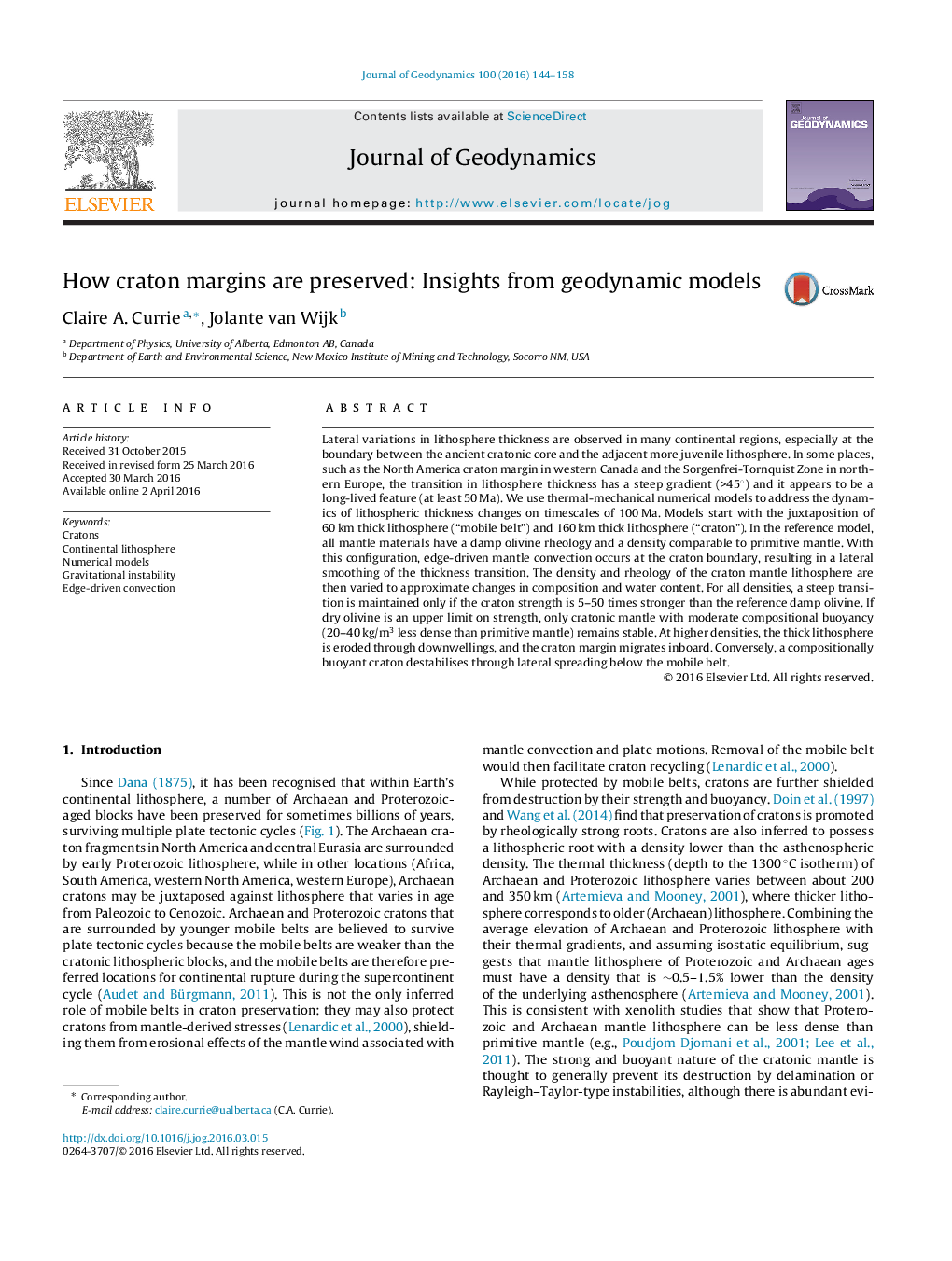| کد مقاله | کد نشریه | سال انتشار | مقاله انگلیسی | نسخه تمام متن |
|---|---|---|---|---|
| 6433074 | 1635750 | 2016 | 15 صفحه PDF | دانلود رایگان |

- Lateral changes in continental lithosphere thickness induce edge-driven convection.
- Thick cratonic lithosphere is readily eroded if it is weak due to partial hydration.
- Steep cratonic margins are preserved for at least 100Â Ma if the lithosphere is dry.
- Moderate compositional buoyancy enhances margin stability.
Lateral variations in lithosphere thickness are observed in many continental regions, especially at the boundary between the ancient cratonic core and the adjacent more juvenile lithosphere. In some places, such as the North America craton margin in western Canada and the Sorgenfrei-Tornquist Zone in northern Europe, the transition in lithosphere thickness has a steep gradient (>45°) and it appears to be a long-lived feature (at least 50 Ma). We use thermal-mechanical numerical models to address the dynamics of lithospheric thickness changes on timescales of 100 Ma. Models start with the juxtaposition of 60 km thick lithosphere (“mobile belt”) and 160 km thick lithosphere (“craton”). In the reference model, all mantle materials have a damp olivine rheology and a density comparable to primitive mantle. With this configuration, edge-driven mantle convection occurs at the craton boundary, resulting in a lateral smoothing of the thickness transition. The density and rheology of the craton mantle lithosphere are then varied to approximate changes in composition and water content. For all densities, a steep transition is maintained only if the craton strength is 5-50 times stronger than the reference damp olivine. If dry olivine is an upper limit on strength, only cratonic mantle with moderate compositional buoyancy (20-40 kg/m3 less dense than primitive mantle) remains stable. At higher densities, the thick lithosphere is eroded through downwellings, and the craton margin migrates inboard. Conversely, a compositionally buoyant craton destabilises through lateral spreading below the mobile belt.
Journal: Journal of Geodynamics - Volume 100, October 2016, Pages 144-158